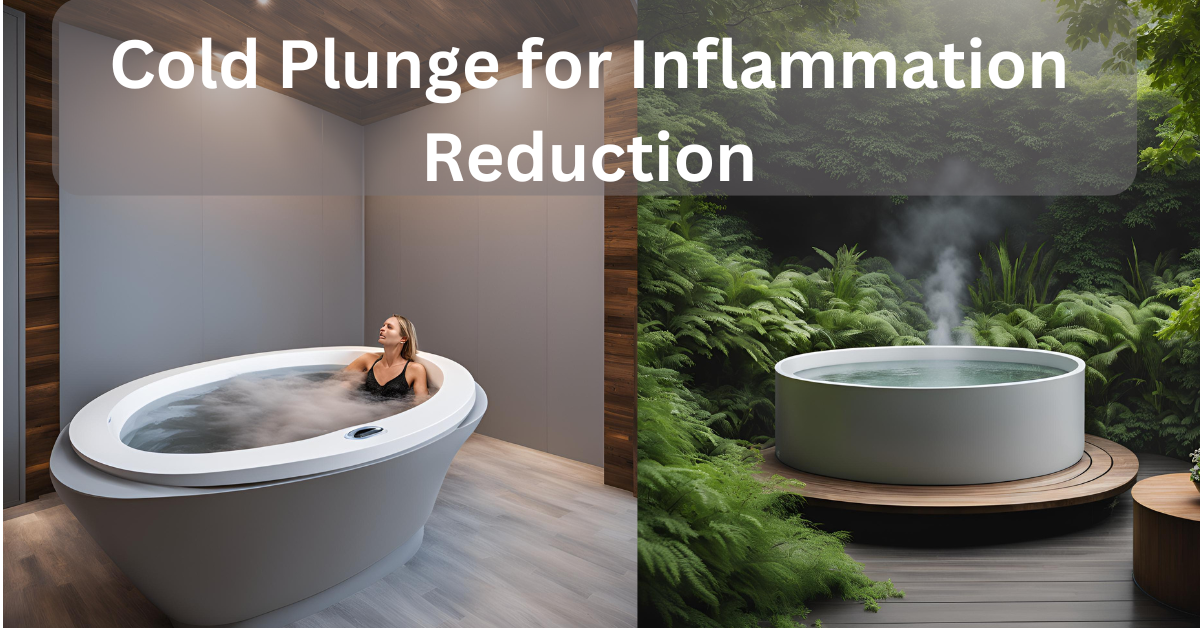Inflammation is the body’s natural response to stress, injuries, or infections. While acute inflammation plays a crucial role in healing, chronic inflammation can lead to a host of health problems, including muscle soreness, joint pain, cardiovascular issues, and even autoimmune disorders. To combat this, people are increasingly turning to cold plunging a form of cold-water immersion (CWI) known to reduce inflammation naturally.
In this article, we’ll explore how cold plunging helps reduce inflammation, the science behind it, and how to integrate it into your wellness routine for optimal benefits.
What Is Cold Plunging?
Cold plunging involves immersing the body in cold water, typically between 50°F to 59°F (10°C to 15°C), for a short period, usually 3 to 10 minutes. This ancient practice, also known as cold-water immersion (CWI), is commonly used by athletes to reduce muscle soreness and enhance recovery, but it offers benefits far beyond post-exercise relief. Recent research highlights the ability of cold plunging to reduce inflammation throughout the body, making it a powerful tool for overall wellness.
The Science Behind Cold Plunging and Inflammation
Cold plunging works by triggering the body’s natural anti-inflammatory response. Here’s how:
- Vasoconstriction: When exposed to cold, your blood vessels constrict, slowing blood flow to inflamed areas and reducing swelling.
- Reduced Cytokine Production: Cold exposure suppresses the release of pro-inflammatory cytokines, proteins that contribute to chronic inflammation.
- Improved Blood Circulation: Once you exit the cold plunge, blood vessels dilate, encouraging fresh blood flow and flushing out inflammatory toxins.
- Lower Cortisol Levels: Regular cold exposure has been linked to reduced cortisol, the body’s stress hormone, which plays a role in chronic inflammation.
Together, these processes not only relieve localized pain and swelling but also address systemic inflammation, supporting overall health.

Key Benefits of Cold Plunging for Inflammation Reduction
1. Reduces Muscle and Joint Inflammation
Cold water immersion helps relieve inflammation in muscles, joints, and connective tissues by decreasing blood flow to injured areas and numbing nerve activity. This is especially beneficial for people with arthritis, tendonitis, or muscle injuries.
Many athletes rely on cold plunging after intense workouts to minimize muscle soreness and prevent long-term inflammation that could lead to injuries.
2. Supports Immune System Health
Chronic inflammation often weakens the immune system, leaving the body more vulnerable to illness. Cold plunging promotes better circulation and enhances immune cell activity, helping the body fend off infections while maintaining a healthy inflammatory balance.
Related Resource: Learn more about the link between cold exposure and immunity on Verywell Health.
3. Improves Recovery for Autoimmune Conditions
Autoimmune disorders, such as rheumatoid arthritis and lupus, involve chronic inflammation that attacks the body’s own tissues. While cold plunging is not a cure, it can ease symptoms by reducing systemic inflammation and soothing painful flare-ups.
Regular cold exposure may also enhance mental well-being, which plays a role in managing autoimmune conditions.
4. Reduces Stress-Related Inflammation
Stress is a major contributor to chronic inflammation. When stress levels are high, the body produces excess cortisol, leading to inflammation. Cold plunging activates the parasympathetic nervous system, which helps reduce stress, lower cortisol levels, and combat inflammation.
Incorporating cold plunges into a self-care routine can promote a state of relaxation and prevent stress-induced health issues.

How to Incorporate Cold Plunging into Your Routine
Integrating cold plunging into your wellness routine doesn’t have to be complicated. Follow these steps to get started safely:
- Set the Right Temperature: Start with water at 59°F (15°C) and gradually reduce the temperature as your body adapts.
- Limit the Time: Beginners should aim for 2 to 3 minutes and gradually work up to 10 minutes per session.
- Use It After Workouts or During Flare-Ups: Cold plunging is particularly effective after intense exercise or when experiencing inflammation-related discomfort.
- Monitor Your Body’s Response: Everyone’s tolerance is different. If you feel dizzy, numb, or uncomfortable, exit the plunge immediately.
Cold Plunge vs. Other Anti-Inflammatory Therapies
Cold plunging offers several advantages compared to other anti-inflammatory practices. Here’s how it stacks up:
| Method | Effectiveness | Cost | Accessibility |
|---|---|---|---|
| Cold Plunge | High | Low to Moderate | Easy (home tubs or facilities) |
| Ice Packs | Localized relief only | Low | Very accessible |
| Cryotherapy | Extreme cold, short duration | High | Expensive (requires a cryo chamber) |
| Anti-Inflammatory Medications | Temporary relief | Varies | Requires prescription or over-the-counter |
While medications and cryotherapy offer benefits, cold plunging provides natural, whole-body inflammation relief at a more affordable cost.
Tips to Maximize the Benefits of Cold Plunging
- Combine Cold and Heat Therapy: Alternate between cold plunging and warm showers or saunas to further enhance circulation and recovery.
- Consistency Matters: Aim for 2 to 3 sessions per week to see long-term benefits for inflammation reduction.
- Hydrate and Nourish Your Body: Cold plunging works best alongside a balanced diet and adequate hydration, both of which help control inflammation.
FAQs
For inflammation reduction, 2 to 3 times per week is generally recommended. However, some people may benefit from daily cold plunges, depending on their condition and tolerance.
While cold plunging is not a cure, it can ease symptoms of chronic illnesses like arthritis by reducing pain and inflammation. Always consult your doctor before starting any new therapy.
Cold plunging is generally safe, but it may not be suitable for people with heart conditions, cold sensitivity, or circulatory issues. If you have any medical concerns, talk to your healthcare provider first.
Conclusion:
Cold plunging offers a simple yet effective solution for inflammation management. Whether you’re recovering from intense workouts, dealing with joint pain, or seeking relief from chronic conditions, cold-water immersion can reduce swelling, promote relaxation, and support long-term health.
When practiced safely and consistently, cold plunging can be a powerful addition to your wellness routine, helping you feel better, move more freely, and stay ahead of inflammation-related health challenges. Try it for yourself and experience the refreshing benefits of cold therapy for mind and body alike.





